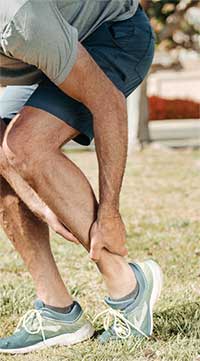Extremity Injuries

Upper and lower extremity injuries can happen to anybody. Athletes and professionals who do repetitive motions with their hands, wrists, legs, and feet are also at higher risk of these types of injuries.
The symptoms of upper & lower extremity injuries vary, but can include:
Loss of range of motion
- Pain
- Weakness
- Skin discoloration
- Muscle aches
- Swelling
- Numbness
- Tingling
Healthcare providers determine the extent of extremity injuries by palpating the area, assessing range of motion, performing x-rays or other types of scans, and employing other diagnostic tests. After a diagnosis is made, treatment can include tactics such as surgery, pain medication, physical therapy, cold compression therapy, or a combination of these. Returning to normal activity as quickly as possible is always a goal for both the patient and physician.
Individuals may suffer from chronic pain in the extremities for a number of reasons such as lingering scar tissue from a previous surgery or an untreated injury. Some of the conditions that may contribute to chronic pain include:
- Muscle tears
- Small fractures
- Bursitis
- Tendonitis
- Nerve damage
- Degenerative joint disease
Regardless of the reason for the pain, it can become quite a nuisance if left untreated. Depending on the diagnosis, a doctor might recommend pain medication, heat and cold therapy, or physical therapy.
